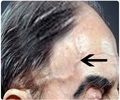The use of the pulmonary artery catheter has gone down by 65 percent in the U.S. probably due to evidence that it does not reduce the risk of death for hospitalized patients.
The use of the pulmonary artery catheter has gone down by 65 percent in the U.S. probably due to evidence that it does not reduce the risk of death for hospitalized patients.
A study conducted between 1993 and 2004 , and published in JAMA points to growing evidence that this invasive procedure does not reduce the risk of death for hospitalized patients.The pulmonary artery (PA) catheter (a thin, flexible tube that is inserted into a pulmonary artery) first became available as a practical diagnostic tool in 1970 and was rapidly embraced by critical care physicians, according to background information in the article.
The PA catheter made measurements such as cardiac output and pressure within the small vessels in the lungs accessible to physicians at the bedside. “Many physicians assumed that these numbers could guide treatment and ultimately reduce mortality in critically ill patients. Within several years, PA catheterization was widely used throughout the United States. In the 1980s, 20 percent to 43 percent of seriously ill patients who were hospitalized were reported to undergo the procedure,” the authors write.
In the mid and late 1980s, there were challenges to the benefits of this procedure. A turning point occurred in September 1996 when a multicenter observational study suggested an increased risk of death with PA catheterization, with an editorial calling for a moratorium on PA catheter use until a randomized controlled trial could be conducted.
In the past 5 years multiple randomized trials and a meta-analysis have shown that this technology has no impact on the risk of death in diverse populations of critically ill patients. But it is not known how this information has changed the use of this procedure.
Renda Soylemez Wiener, M.D., and H. Gilbert Welch, M.D., M.P.H., of the Department of Veterans Affairs Medical Center, White River Junction, Vt., examined the trends in the utilization of PA catheterization from 1993-2004 using data from all U.S. states contributing to the Nationwide Inpatient Sample.
Advertisement
A significant change in trend occurred following the 1996 study that suggested an increased risk of death with PA catheterization. Among common diagnoses associated with PA catheterization, the decline was most prominent for heart attack, which decreased by 81 percent, and least prominent for septicemia (a disease caused by toxic microorganisms in the bloodstream), which decreased by 54 percent.
Advertisement
Source-Eurekalert
LIN/C








